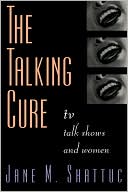Category Books
- Fiction Books & Literature
- Graphic Novels
- Horror
- Mystery & Crime
- Poetry
- Romance Books
- Science Fiction & Fantasy
- Thrillers
- Westerns
- Ages 0-2
- Ages 3-5
- Ages 6-8
- Ages 9-12
- Teens
- Children's Books
- African Americans
- Antiques & Collectibles
- Art, Architecture & Photography
- Bibles & Bible Studies
- Biography
- Business Books
- Christianity
- Computer Books & Technology Books
- Cookbooks, Food & Wine
- Crafts & Hobbies Books
- Education & Teaching
- Engineering
- Entertainment
- Foreign Languages
- Game Books
- Gay & Lesbian
- Health Books, Diet & Fitness Books
- History
- Home & Garden
- Humor Books
- Judaism & Judaica
- Law
- Medical Books
- New Age & Spirituality
- Nonfiction
- Parenting & Family
- Pets
- Philosophy
- Political Books & Current Events Books
- Psychology & Psychotherapy
- Reference
- Religion Books
- Science & Nature
- Self Improvement
- Sex & Relationships
- Social Sciences
- Sports & Adventure
- Study Guides & Test Prep
- Travel
- True Crime
- Weddings
- Women's Studies
The Talking Cure: TV Talk Shows and Women »

Authors: Jane M. Shattuc
ISBN-13: 9780415910880, ISBN-10: 0415910889
Format: Paperback
Publisher: Taylor & Francis, Inc.
Date Published: January 1997
Edition: (Non-applicable)
Author Biography: Jane M. Shattuc
Jane M. Shattuc is Associate Professor of Mass Communication-Film at Emerson College, Boston. She is the author of Television, Tabloids and Tears: Fassbinder and Popular Culture.
Book Synopsis
The Talking Cure examines four nationally syndicated television talk shows—Donahue, The Oprah Winfrey Show, Geraldo and Sally Jessy Raphael—which are primarily devoted to feminine culture and issues. Serving as one of the few public forums where working-class women and those with different sexual orientations have a voice, these talk shows represent American TV at its most radical. Shattuc examines the tension between talk's feminist politics and the television industry, who, in their need to appeal to women, trades on sensation, stereotypes and fears in order to engender product consumption. However, this genre is not a one-way form of social interaction. The female audience complies and resists in a complex give-and-take, and it is this relationship which The Talking Cure aims to understand and reveal.
Publishers Weekly
By 1995, 15 daytime talk shows were aired in major U.S. TV markets, ending the 50-year reign of soap operas as the most popular daytime program format. In this cultural history, Shattuc distinguishes issue-oriented daytime talk shows from other talk shows: aimed at a female audience, these shows are produced by non-network companies for broadcast on network-affiliated stations. Trying to spur active audience participation, the hosts, sometimes with the help of "experts," mediate between guests and audiences on current social issues. Comparing 1994 TV themes with news of "crime and the uncommon" in Joseph Pulitzer's 1884 New York World, Shattuc traces the talk show's evolution from the 1950s late-night celebrity talk format and 1960s daytime celebrity talk shows to the National Enquirer and the "circuslike display" seen on more recent shows, which she describes as "part narrative melodrama and part public affairs." Daytime TV talk shows are allowed a "degree of tawdriness" not found on prime time, and they emphasize class inequities, defending "the little guy" against the reigning power. They provide, says Shattuc, a discourse, a debate for the disenfranchised. The book is structured to carry the reader through every aspect: authenticity, use of actors, the production process, topics and issues (feminism, race, gays), advertising, ratings and controversial confrontational tactics (the "ambush disclosure"), concluding with a look at messages found online in computer bulletin board debates. Nothing is omitted from this exhaustive, much-needed study, the result of numerous interviews and research over a four-year period, involving 240 hours of talk shows, hundreds of questionnaires and exploration of the Museum of Television & Radio archives. (Jan.)
Table of Contents
| Acknowledgments | ||
| 1 | Introduction: The Tenus of the Debate about Talk Shows | 1 |
| 2 | Sobbing Sisters: The Evolution of Talk Shows | 13 |
| 3 | Talk is Cheap: How the Industrial Production Process Constructs Femininity | 47 |
| 4 | The "Oprahfication" of America?: Identity Politics and Public Sphere Debate | 85 |
| 5 | Freud vs. Women: The Popularization of Therapy on Daytime Talk Shows | 111 |
| 6 | "Go Ricki": Politics, Perversion, and Pleasure in the 1990s | 137 |
| 7 | Conclusion: The Inconclusive Audience | 171 |
| Appendix | Talk Show Content (February 21 - 25, 1995) | 199 |
| Notes | 207 | |
| Bibliography | 227 | |
| Index | 237 |
Subjects
 Radio
Radio  Radio - General & Miscellaneous
Radio - General & MiscellaneousEntertainment
 Television
Television  Television Broadcasting - Social Aspects
Television Broadcasting - Social AspectsEntertainment
 Television
Television  Television Programs - Talk Shows
Television Programs - Talk ShowsSocial Sciences
 Women's Studies
Women's Studies  Women's Studies
Women's StudiesWomen's Studies
 Women's Studies
Women's Studies  Women in Entertainment & Media
Women in Entertainment & MediaNonfiction
 Entertainment
Entertainment  Radio
RadioNonfiction
 Entertainment
Entertainment  Television
Television
